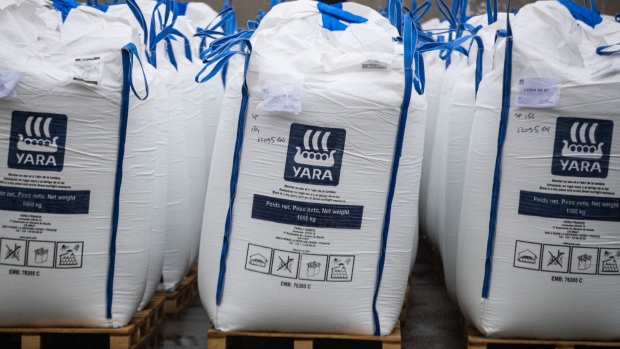Mar 1, 2024
Yara Inks Long-Term Deal for Green Ammonia From Acme Oman Plant
, Bloomberg News

(Bloomberg) -- Europe’s largest fertilizer maker, Yara International ASA, agreed to buy ammonia made using solar power from India’s Acme Group in a deal that may spur activity in the fledgling renewable commodity.
The deal covers 100,000 tons a year in what may be the world’s first arm’s length contract for renewable ammonia of this scale, the companies said in a statement. Acme will supply the commodity from the first phase of its Oman manufacturing project with an expected start date of 2027.
Yara, which invented a process to mass produce fertilizer more than a century ago, wants to become a major player in supplying clean energy. It sees clean ammonia as a solution to the decarbonization of hard-to-abate sectors, such as shipping, power generation and agriculture.
“The Yara deal becomes an anchor deal for us to kick start our construction activities in Oman,” Ashwani Dudeja, head of green hydrogen and ammonia in Acme, said in a Bloomberg interview on Thursday. It also “sets the right tone for the industry because many customers or developers are hesitating in taking the decisions.”
For the Oslo-based company, the 10-year-plus deal “fits our needs very well in terms of a stable supply,” Magnus Ankarstrand, head of Yara Clean Ammonia, told Bloomberg.
It took 18 months of negotiations to strike what is one of the first of its kind in the industry for the low-emission fuel. On top of the commercial details, the parties had to juggle the rapidly developing regulatory environment for renewable fuels in Europe, as well as advances in technology, Yara’s Ankarstrand said. Scatec ASA, a Norwegian solar developer, pulled out of discussions last year.
The agreement is just a drop in the ocean compared to the 18 million tons of all ammonia traded each year. Similar to the long-term natural gas contracts hammered out in the early 2000’s, the deal took time to finalize and has the potential to form a benchmark for later agreements, according to Dudeja.
Used widely in fertilizer and cleaning products, ammonia has a higher energy density than hydrogen and doesn’t require cooling to extreme temperatures, making it cheaper to store. So-called green ammonia can be produced by combining hydrogen from water electrolysis with nitrogen using renewable energy. It can also be processed from natural gas before locking away the resulting carbon dioxide to create what’s known as blue ammonia.
Yara’s clean ammonia unit is the operator of the largest global ammonia network with 15 ships and access to 18 ammonia terminals and multiple production and consumption sites. It is exploring opportunities with Bunker Holding Group to supply clean ammonia as a marine fuel, while also evaluating potential large-scale production projects with CCS in the US for blue ammonia.
The ammonia produced by Acme, which is moving beyond pure solar generation to tap an anticipated boom in hydrogen demand, will comply with the EU renewable fuel of non-biological origin and renewable energy directive requirements, the companies said. Oman, with its sunny skies and proximity to export markets, offers low cost electricity and funding.
(Updates with scope in lead, comment in seventh.)
©2024 Bloomberg L.P.






